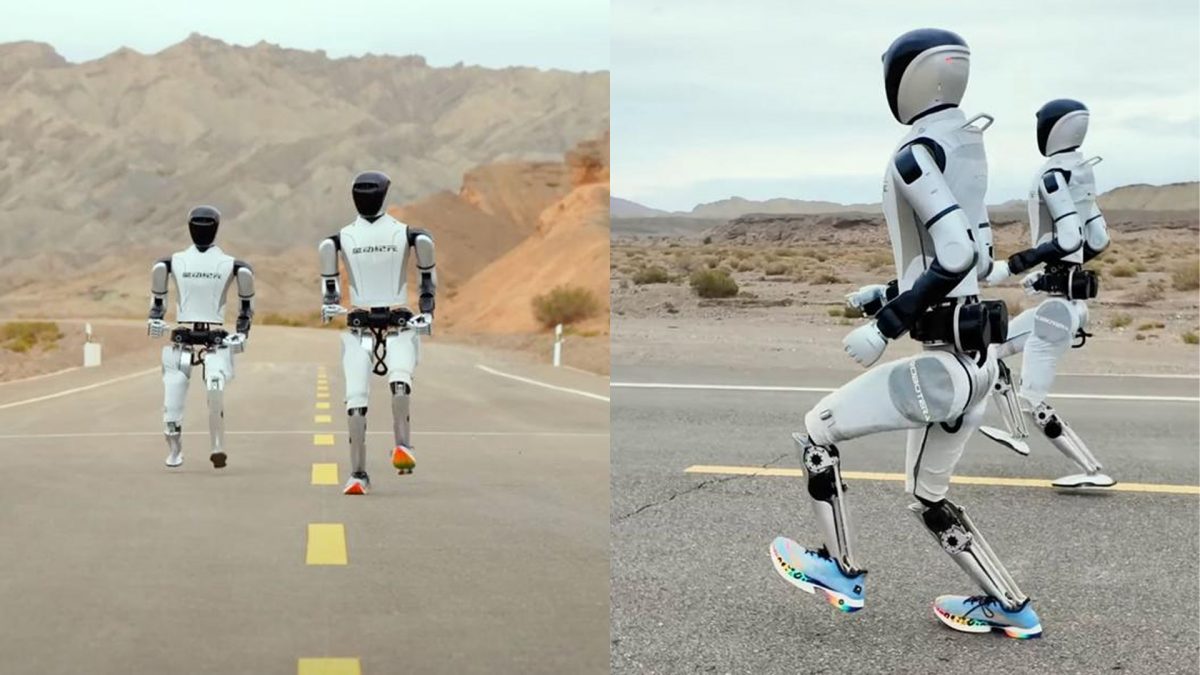Humanoid robots are making serious strides, moving beyond household chores and into impressive new territory.
Chinese robotics startup Robot Era has launched what it claims is the fastest humanoid in the world. Called STAR1, the robot has overtaken Tesla’s Optimus and Boston Dynamics’ Atlas to claim the title of the world’s fastest humanoid robot.
STAR1 stands 5.6 feet tall, weighs approximately 143 pounds, and can sprint at a top speed of 8 miles per hour (roughly 13 km/h). This speed sets it ahead of competitors like Unitree’s H1 robot, which previously held the record at 7.4 mph.
To highlight its capabilities, Robot Era released a video featuring two STAR1 units racing across the challenging terrain of the Gobi Desert in China. One of the robots was even given a pair of sneakers to see if it could pick up the pace.
Powered by high-torque motors and advanced AI algorithms, STAR1 demonstrated its ability to run over a variety of surfaces, including paved roads, sand, and grassland.
The video highlighted its agility and speed, revealing that the robot reached its maximum speed in about 30 seconds. Thanks to its robust motor system, the STAR1 is able to smoothly navigates uneven terrains, making it ideal for both urban and off-road environments.
What really sets STAR1 apart is its computing power. It’s built on AI hardware capable of processing an astounding 275 trillion operations per second, far surpassing the performance of most modern laptops, which typically handle between 45 and 55 trillion operations per second.
Impact Shorts
More ShortsAdditionally, STAR1 has “12 degrees of freedom,” referring to its joints and range of motion, allowing for highly efficient movement.
The robot’s real-time decision-making abilities are supported by high-speed communication modules, ensuring that it can process environmental data instantly. This feature plays a crucial role in its ability to adapt to unpredictable terrains and maintain stability at high speeds.
With STAR1 now in the spotlight, Robot Era has raised the bar in the humanoid robotics race. While Tesla’s Optimus and Boston Dynamics’ Atlas focus on different aspects of robotic development, STAR1’s blend of speed, mobility, and advanced AI could set a new standard for future innovations in the field.
As humanoid robots continue to evolve, it’s clear that they are becoming more than just clever machines — they are fast becoming athletes too.
)